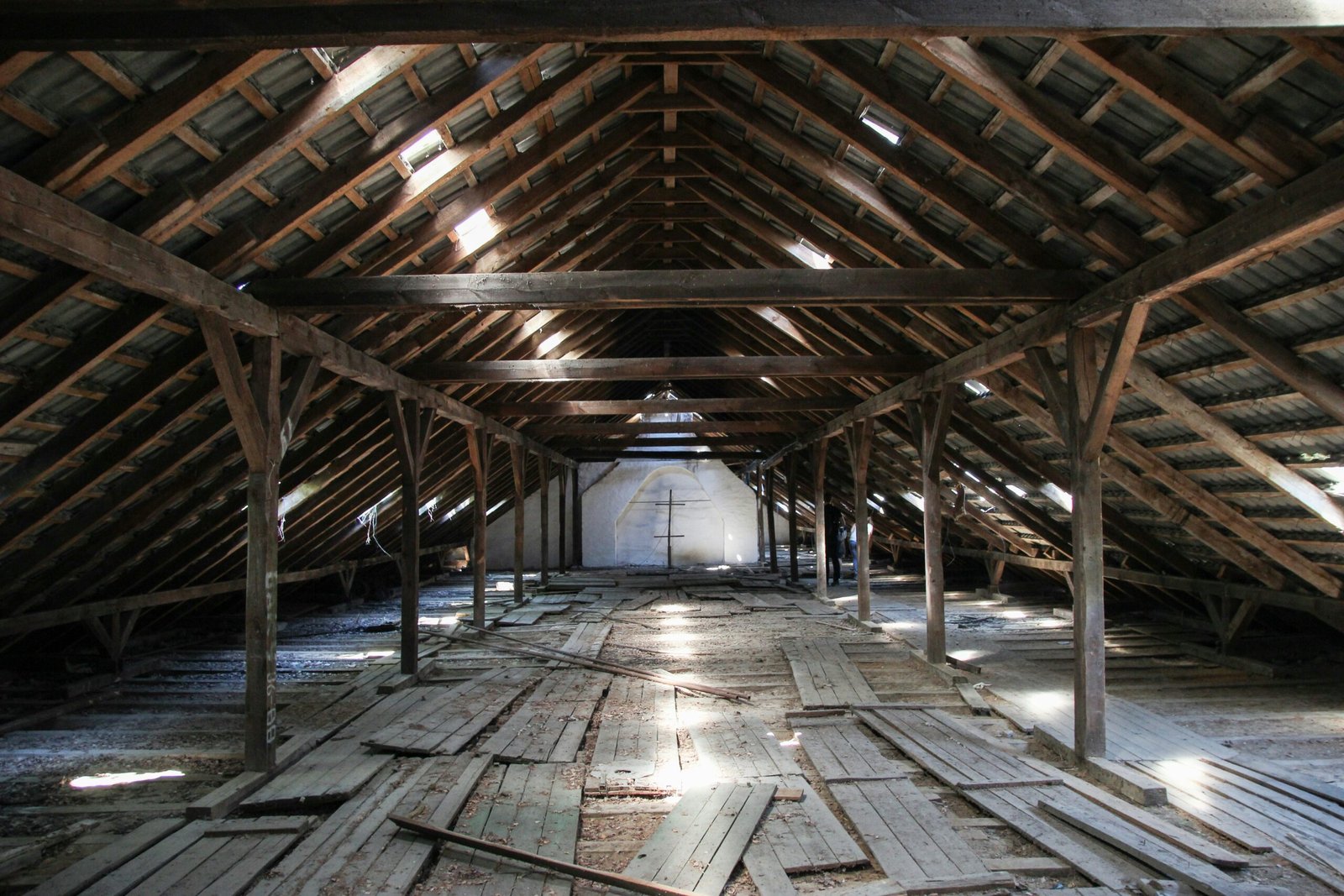Learn how to address smaller cracks in your walls, ceilings, or floors with our comprehensive DIY crack repair guide. From identifying the type of crack to gathering the necessary tools and materials, preparing the area, filling the crack, sanding, priming, painting, and maintaining the repair, this guide provides step-by-step instructions to help you maintain your home’s structural integrity and aesthetic appeal. Save costs and gain valuable home improvement skills with our expert tips and detailed process.
Introduction to DIY Crack Repair
Addressing smaller cracks in your walls, ceilings, or floors is crucial for maintaining the structural integrity and aesthetic appeal of your home. DIY crack repair allows homeowners to tackle these minor issues before they escalate into more significant problems, which could require extensive and costly professional intervention. By taking the initiative to repair cracks yourself, you can enjoy significant cost savings and the satisfaction that comes with successfully completing a home improvement project.

Smaller cracks can emerge due to various reasons, including natural settling of the building, temperature fluctuations, and moisture variations. Ignoring these cracks can lead to more severe damage, causing not only unsightly blemishes but also potential structural weaknesses. Therefore, early intervention is key to preventing long-term damage and preserving the safety and value of your property.
Please, read our post and do not forget to check our YouTube channel “Grig Stamate”:
https://www.youtube.com/@GrigStamate
You will find there, thousands of designing, furnishing, and decorating ideas for your home interior and outdoors.
Allow me to mention one of them:
LIVING ROOMS, Small Big Changes, Paint the Walls, 50 Inspirational ideas (video)
Homeowners may encounter different types of cracks, such as hairline cracks, which are typically less than 1/16 of an inch wide and often found in plaster or drywall. These are usually cosmetic and relatively easy to repair. Another common type is shrinkage cracks, which occur as a result of the natural drying and shrinking of construction materials. Settlement cracks, on the other hand, are usually wider and may indicate more significant foundation issues. By understanding the nature of these cracks, you can better assess the appropriate repair methods and materials needed to address them effectively.
Embarking on a DIY crack repair project not only enhances your home’s appearance but also empowers you with valuable skills and knowledge. With the right tools, materials, and guidance, you can confidently undertake these repairs, ensuring your home remains a safe and inviting space for years to come. In the following sections, we will delve into the step-by-step process of repairing various types of cracks, providing you with the essential information to succeed in your DIY endeavors.
Identifying the Type of Crack
Recognizing the type of crack in your structure is paramount before embarking on any repair work. Cracks can be broadly categorized into hairline cracks, structural cracks, and settlement cracks, each carrying different implications and requiring varied approaches. Understanding these distinctions can help you determine whether a crack is a minor issue you can address yourself or if it necessitates professional intervention.
Hairline cracks are typically very fine and narrow, often appearing on walls and ceilings. These cracks are usually less than 1/16th of an inch wide and are generally not a cause for concern. They often arise from the natural settling of a building or minor fluctuations in temperature and humidity. Addressing hairline cracks can usually be done with simple DIY methods, such as applying a fresh coat of paint or using a filler.
Structural cracks, on the other hand, are more severe and indicate underlying issues with the building’s foundation or structural integrity. These cracks tend to be wider than 1/8th of an inch and may appear in horizontal, vertical, or stair-step patterns. Structural cracks often signal significant problems like foundation movement, poor construction, or soil issues. In such cases, professional assessment and repair are crucial to ensure the building’s safety and stability.
Settlement cracks fall somewhere between hairline and structural cracks. They are caused by the natural settling of the structure over time and can usually be found near doors, windows, and corners of buildings. These cracks can be vertical or diagonal and are typically less than 1/4th of an inch wide. While some settlement cracks can be managed with DIY techniques, others, particularly those that continue to widen, may require professional evaluation.
When assessing a crack, consider its size, direction, and location. Small, narrow cracks often pose less risk and can be handled with DIY solutions. Conversely, large, wide, or recurring cracks, especially those in critical areas like foundations or load-bearing walls, warrant professional attention. Using these guidelines, you can better determine the best course of action to maintain your building’s integrity and safety.
Gathering the Necessary Tools and Materials
Repairing smaller cracks effectively requires a set of specific tools and materials. Proper preparation not only ensures a successful repair but also enhances the durability and appearance of the surface. Below is a comprehensive list of what you will need:
First and foremost, a putty knife is essential. This tool helps to apply the crack filler smoothly and evenly. Opt for a flexible blade for better control. Next, you will need a crack filler. Choose a high-quality filler that is suitable for the type of surface you are repairing—be it drywall, plaster, or concrete. Products like spackling paste for drywall or concrete crack sealant are commonly available at hardware stores.
Once the crack is filled, sandpaper of varying grits (120 to 220) will be necessary to smooth the surface. Sanding ensures that the area is even and ready for priming and painting. After sanding, apply a primer to the repaired area. Primers are crucial as they help the paint adhere better and provide a uniform finish. Select a primer that matches your final paint type—latex or oil-based.
For the final touch, you will need paint that matches the existing surface color. Always keep a small amount of the original paint for touch-ups. If matching is difficult, consider repainting the entire section for uniformity.
Safety should never be overlooked. Gloves and goggles are vital to protect your hands and eyes from dust, debris, and chemicals. Always work in a well-ventilated area to avoid inhaling any fumes.
These items can be conveniently purchased from local hardware stores, big-box retailers like Home Depot or Lowe’s, and online platforms such as Amazon. For those on a budget, discount stores and second-hand shops often carry some of these tools and materials. Ultimately, having the right tools and materials is the first step towards a successful DIY crack repair project.
Preparing the Area for Repair
Effective preparation is crucial when tackling smaller cracks in various surfaces. The first step involves cleaning the area thoroughly. Use a stiff brush or a vacuum cleaner to remove any loose debris and dirt from the cracked region. This ensures that the repair material can adhere properly. If the crack is in a wall, gently scrape away any flaking paint or plaster surrounding the crack. For cracks in concrete or other hard surfaces, a wire brush can be particularly useful for clearing away loose particles.
Once the area is clean, it’s essential to make sure the surface is completely dry. Any residual moisture can compromise the effectiveness of the repair material. Use a dry cloth or a fan to speed up the drying process, if necessary. In cases where the crack is in a bathroom or other damp environment, consider using a hairdryer on a low setting to ensure the area is dry.
Before starting the repair, take precautions to protect the surrounding surfaces and any nearby furniture. Use drop cloths to cover floors and large furniture items. Painter’s tape can be applied around the edges of the cracked area to prevent repair materials from spreading to unintended areas. This is particularly important if you are working on a wall near trim or molding, as it helps keep the repair neat and contained.
Additionally, wearing protective gloves and safety goggles is advisable to shield yourself from dust and debris during the cleaning process. If the crack is in a ceiling, consider wearing a dust mask to avoid inhaling particles that may fall during preparation.
By following these steps meticulously, you can ensure that the cracked area is well-prepared, setting the stage for a successful repair. Proper preparation not only contributes to a more effective repair but also extends the life of the surface being fixed.
Filling the Crack
Once you have prepared the crack for repair, the next step is to fill it effectively. Begin by selecting an appropriate crack filler or spackling compound. These materials are specifically designed to adhere well to the surfaces and provide a durable, seamless finish. Using a putty knife or a similar tool, apply the filler directly into the crack, ensuring that it penetrates deeply and reaches all crevices. This step is crucial for preventing the crack from reappearing in the future.
After applying the crack filler, use the putty knife to smooth out the surface. Hold the tool at a slight angle and carefully drag it along the filled crack. This action helps to remove any excess material and creates a level surface in line with the surrounding area. If the crack is particularly deep or wide, it may be necessary to apply multiple layers of filler. Allow each layer to dry completely before adding the next to ensure optimal adhesion and strength.
For a seamless finish, you can use a damp cloth to gently smooth the surface of the filler before it dries completely. This technique helps to eliminate any minor imperfections and creates a more polished appearance. Additionally, sanding the area lightly after the filler has dried can further refine the surface, making it ready for painting or other finishing touches.
Remember that patience and attention to detail are key when filling cracks. Rushing through the process can lead to uneven surfaces and a less durable repair. By following these steps meticulously, you can achieve a professional-looking result that blends seamlessly with the surrounding material, ensuring the longevity and aesthetic appeal of the repaired area.
Sanding and Smoothing the Surface
After allowing the filler to dry completely, the next crucial step in repairing smaller cracks is sanding the surface. This process is essential for achieving a smooth, even finish that seamlessly blends with the surrounding area. Begin by selecting the right grit sandpaper; typically, a medium-grit sandpaper (around 120 to 150 grit) is ideal for initial sanding. This grit effectively removes excess filler while being gentle enough not to damage the surrounding material.
To start sanding, wrap the sandpaper around a sanding block or use a handheld sanding tool. This helps maintain an even pressure and avoids creating gouges or indentations in the surface. Gently sand the repaired area using circular motions, ensuring you cover the entire surface uniformly. Pay particular attention to the edges of the filled crack to ensure they blend smoothly into the surrounding material.
As you progress, periodically check the surface by running your fingers over it to feel for any uneven spots or ridges. Once the initial sanding is complete, switch to a finer grit sandpaper (around 220 grit) for a final pass. This finer grit helps achieve a polished finish, eliminating any remaining minor imperfections.
Avoid over-sanding, which can create indentations or expose the underlying crack again. If you notice any low spots or remaining imperfections, apply a thin layer of filler, allow it to dry, and sand it again. The goal is to achieve a flawless, smooth surface that is indistinguishable from the surrounding area.
Finally, ensure the surface is free of dust and debris by wiping it down with a damp cloth. This step is vital before proceeding with any further finishing, such as priming or painting. Proper sanding and smoothing of the surface not only enhance the aesthetics but also ensure the durability of the repair, preventing future issues from arising.
Priming and Painting
Once you have successfully filled and sanded the smaller cracks, the next crucial step is priming the repaired area. Priming is an essential process that prepares the surface for painting. It helps the paint adhere better and ensures a uniform finish. The primer acts as a bonding agent between the surface and the paint, which is particularly important for repaired areas as it can seal any residual gaps and prevent future peeling or cracking.
Begin by selecting a high-quality primer suitable for the type of surface you are working on. Apply the primer using a brush or roller, ensuring that the coats are even and thin. Allow the primer to dry thoroughly, as specified by the manufacturer’s instructions, before proceeding to paint. This drying time is vital to achieving a smooth and professional-looking finish.
When it comes to painting, matching the existing paint color is crucial for a seamless blend. If possible, use leftover paint from the original job or take a sample of the existing paint to a hardware store for a precise match. Apply the paint in thin, even coats using a high-quality brush or roller. It is often beneficial to feather the edges of the painted area to blend it into the surrounding wall or ceiling seamlessly. This technique involves lightly brushing the edges of the painted area to avoid a stark contrast between the new and old paint.
Between coats, allow the paint to dry completely. Depending on the paint type and environmental conditions, this could take a few hours. Multiple thin coats are preferable to one thick coat, as they provide a more durable and aesthetically pleasing finish. Take your time with this step to ensure the repaired area is indistinguishable from the rest of the surface.
Maintaining and Monitoring the Repair
Once you have successfully repaired a smaller crack, the importance of ongoing monitoring and maintenance cannot be overstated. This ensures that the integrity of the repair remains intact and the crack does not reappear, potentially leading to more significant issues.
Regular inspections of the repaired area should become part of your maintenance routine. Examine the surface periodically to spot any signs of wear, new cracks, or potential weaknesses. Early detection allows for prompt action, which can prevent further damage and save time and resources in the long run.
Avoiding heavy impacts on the repaired surface is crucial. While the repair might seem robust initially, excessive force can compromise its stability. Be mindful of placing heavy objects or applying undue pressure on the area. Additionally, exposure to moisture should be minimized, as water can seep into the repaired crack and weaken the bond. Utilizing waterproof sealants or protective coatings can provide an extra layer of defense against moisture infiltration.
Incorporating reinforcement steps can enhance the durability of the repair. For instance, applying a secondary layer of filler or sealant can offer added strength. In some cases, particularly with recurring issues, using a mesh or fabric within the filler can distribute stress more evenly and reduce the likelihood of future cracks.
By integrating these maintenance and monitoring practices, you can significantly extend the lifespan of your repair. Regular attention and proactive measures will ensure that the repair remains effective, maintaining the aesthetic and structural integrity of the surface. Remember, a little effort in upkeep can prevent the need for more extensive repairs down the line.
Other related posts from our website:
https://howtobuildahouseblog.com/do-it-yourself-restoration-of-kitchen-furniture/
Thank you so much for your attention.
Stay tuned. We will upload many other amazing posts to our website and videos onto our YouTube channel.
Thank you so much.
for your time and attention.
Best Regards
See you to another post,
Bye, Bye


